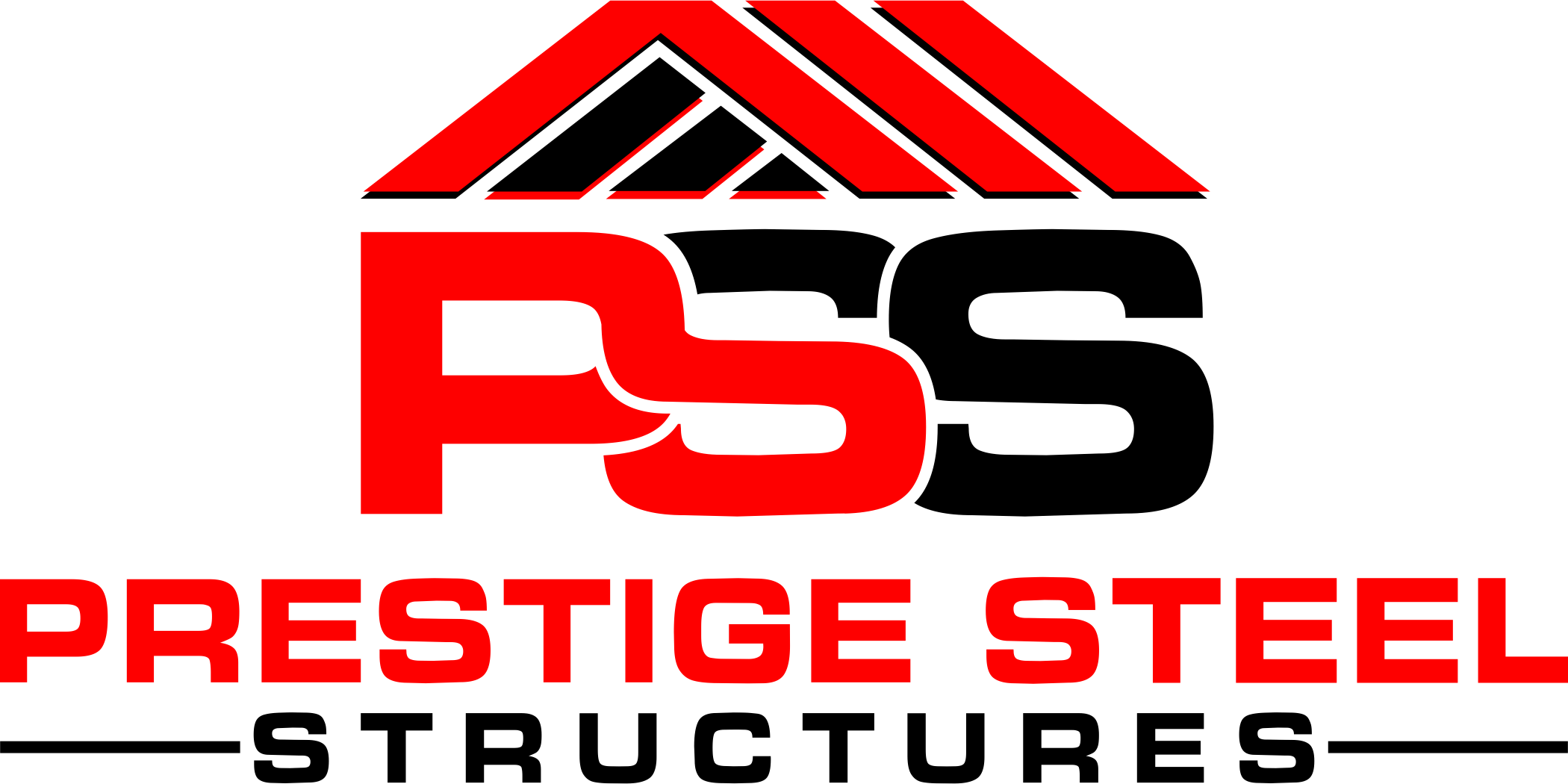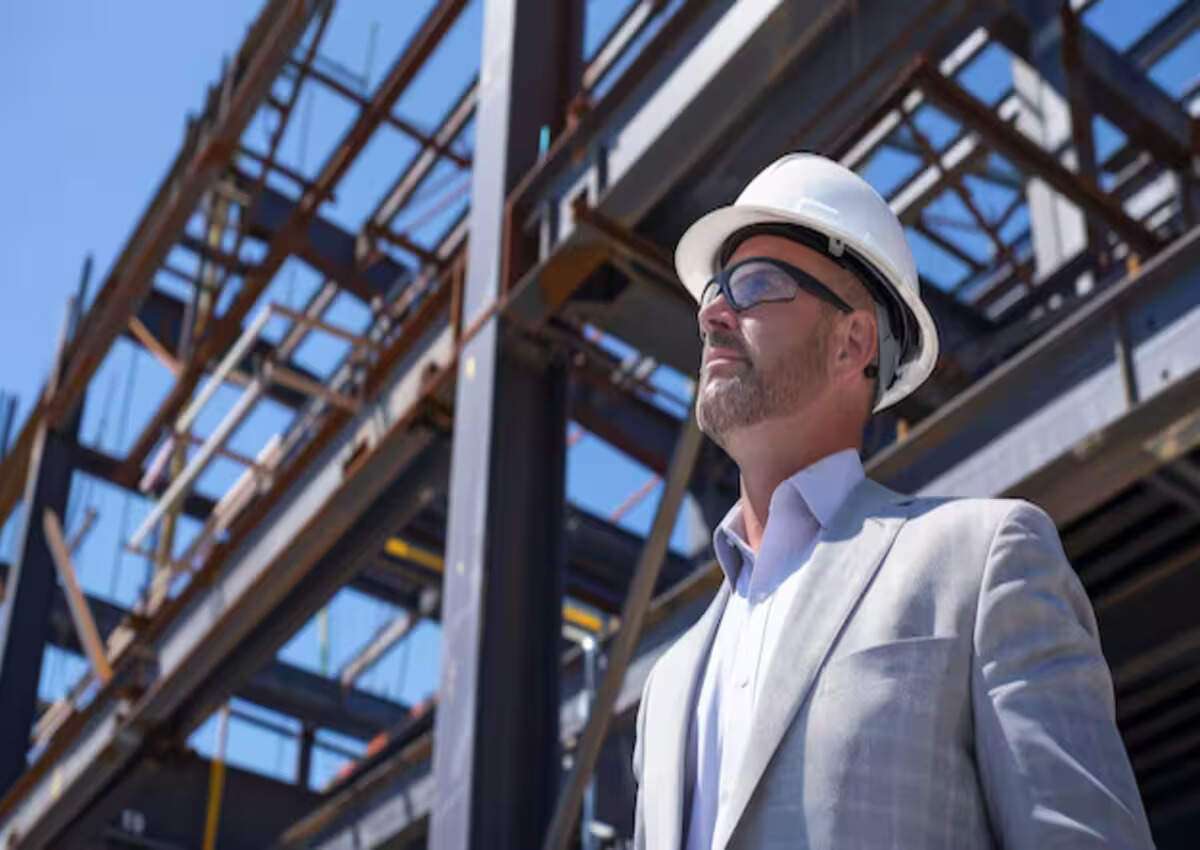When it comes to insulating steel buildings, choosing the right type of insulation is essential for energy efficiency, temperature regulation, and overall comfort. There are several types of insulation options available, each with unique benefits depending on the specific needs of your steel buildings.
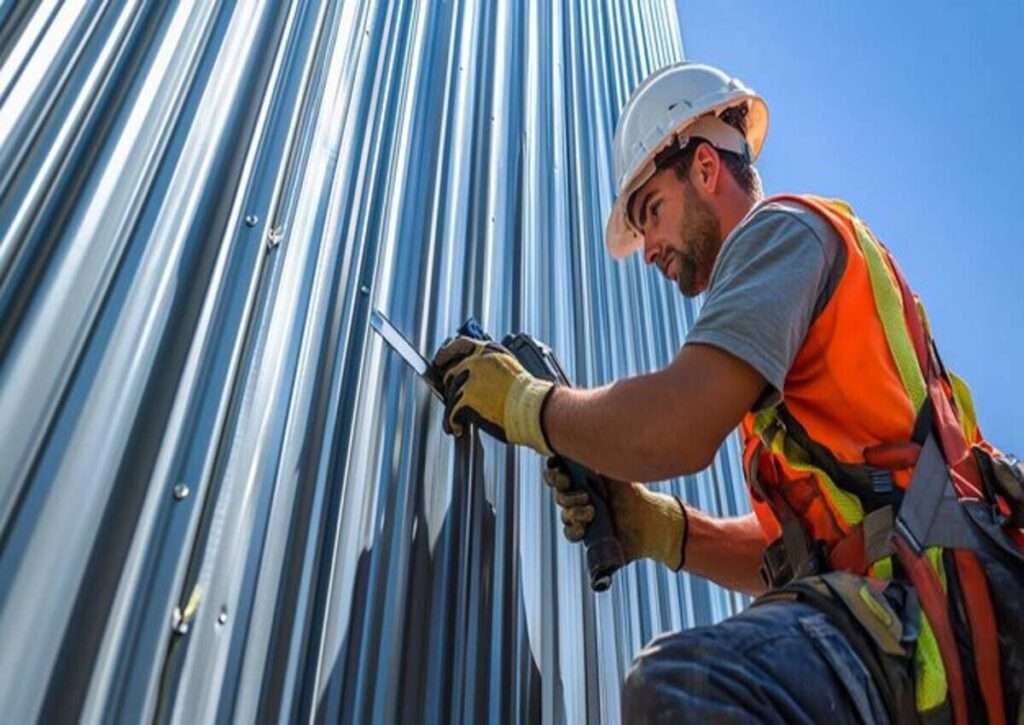
Understanding Insulation and How It Works
Insulation is a material or substance used to reduce the transfer of heat, sound, or electricity from one area to another. In the context of buildings, insulation primarily refers to materials designed to slow down the movement of heat between the inside and outside of a steel structure, helping to maintain a comfortable indoor temperature and improve energy efficiency.
How Does Insulation Work?
Insulation works by limiting three primary types of heat transfer: conduction, convection, and radiation. Here’s how each of these processes works in relation to insulation:
- Conduction: This is the direct transfer of heat through materials. When there is a temperature difference, heat naturally flows from warmer areas to cooler ones. Insulation materials like fiberglass and foam have low thermal conductivity, meaning they slow down this transfer of heat through the walls, floors, and roof.
- Convection: This process involves the movement of heat through fluids or gases, which is common with air currents. In an insulated space, materials help trap air, reducing airflow and limiting convective heat transfer. This keeps warm air from escaping in winter and blocks hot air from entering in summer.
- Radiation: This type of heat transfer occurs in the form of electromagnetic waves, primarily from the sun. Reflective insulation materials, such as radiant barriers, work by reflecting radiant heat away from the building. This helps to keep structures cooler in hot climates by reducing the amount of heat that penetrates through the roof and walls.
By minimizing these types of heat transfer, insulation helps to maintain a consistent indoor temperature, reduce energy consumption, and lower heating and cooling costs. Additionally, insulation can also provide soundproofing benefits and, in some cases, improve the structural integrity of a building.
Why is Insulation Important?
Effective insulation helps conserve energy, lowers utility costs, reduces environmental impact, and enhances indoor comfort by maintaining a consistent temperature. Additionally, it can offer soundproofing benefits, reducing noise from external sources.
Overall, insulation plays a crucial role in increasing the energy efficiency, comfort, and value of buildings, making it an essential component for residential, commercial, and industrial properties alike.
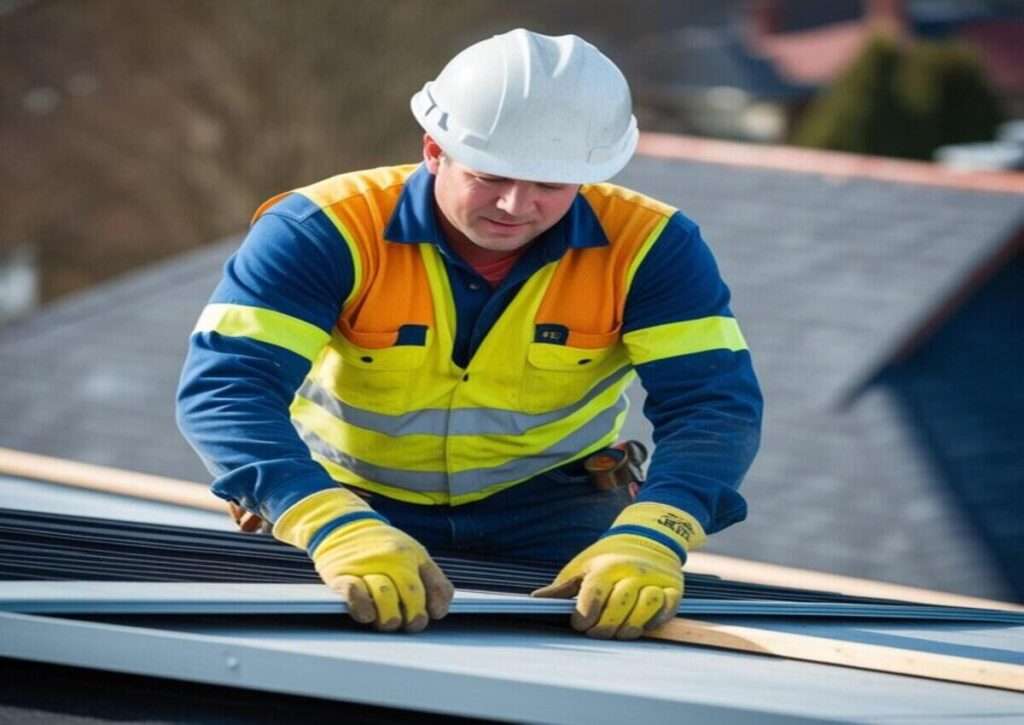
Where Should I Insulate in a Steel Building?
To maximize energy efficiency and protect your prefabricated steel building, it’s essential to insulate specific areas:
- Roof: Insulating the roof is crucial, as it is the primary barrier between your building and outdoor weather conditions. For buildings like carports, roof insulation helps regulate temperature, preventing heat loss in winter and reducing heat gain in summer.
- Walls: In areas with varying weather patterns, like most parts of the country, insulating the walls is also important. This is especially vital if you live in a region with heavy snowfall, which can build up against walls and impact interior temperatures. Wall insulation adds another layer of protection against extreme cold or heat.
- Break Steel-to-Steel Contact: Insulating your steel buildings helps to break steel-to-steel contact points. This is key in preventing condensation buildup, which can lead to rust and damage over time.
How to Install Insulation in Steel Buildings
For steel buildings, insulation is typically installed between the exterior sheeting and the building skeleton. This placement ensures that the insulation is effectively sandwiched in place, enhancing thermal performance and protecting the building from moisture and corrosion.

Benefits of Insulating a Steel Building
Proper insulation in a steel buildings offers a range of advantages that go beyond just energy savings. Here are some key benefits:
- Conserves Energy and Saves Money: Insulating a steel building helps to create a more energy-efficient environment by reducing heat transfer. This means your heating and cooling systems won’t have to work as hard, which translates into lower energy bills.
- Stabilizes Interior Temperature: By insulating your building, you create a controlled environment that keeps temperatures stable year-round. This makes it easier for HVAC systems to maintain a comfortable indoor climate, reducing strain on the equipment and enhancing overall comfort.
- Absorbs Sound: Insulation not only helps with temperature control but also acts as a sound barrier. It minimizes the amount of noise that enters or escapes the building, which is particularly beneficial for businesses that operate loud machinery. This added soundproofing can improve the work environment by reducing distractions and enhancing sound quality within the building.
- Reduces Moisture and Condensation: One of the primary functions of steel building insulation is to limit moisture buildup by reducing condensation. It does this by preventing direct contact between the cold outer metal and warmer indoor air, which helps to protect against rust and corrosion. Additionally, insulation minimizes thermal bridging, where heat escapes through metal surfaces, further controlling condensation and reducing the risk of moisture-related issues.
In summary, insulating a steel building provides a more comfortable, energy-efficient, and sound-friendly environment, all while protecting the structure from potential moisture damage.
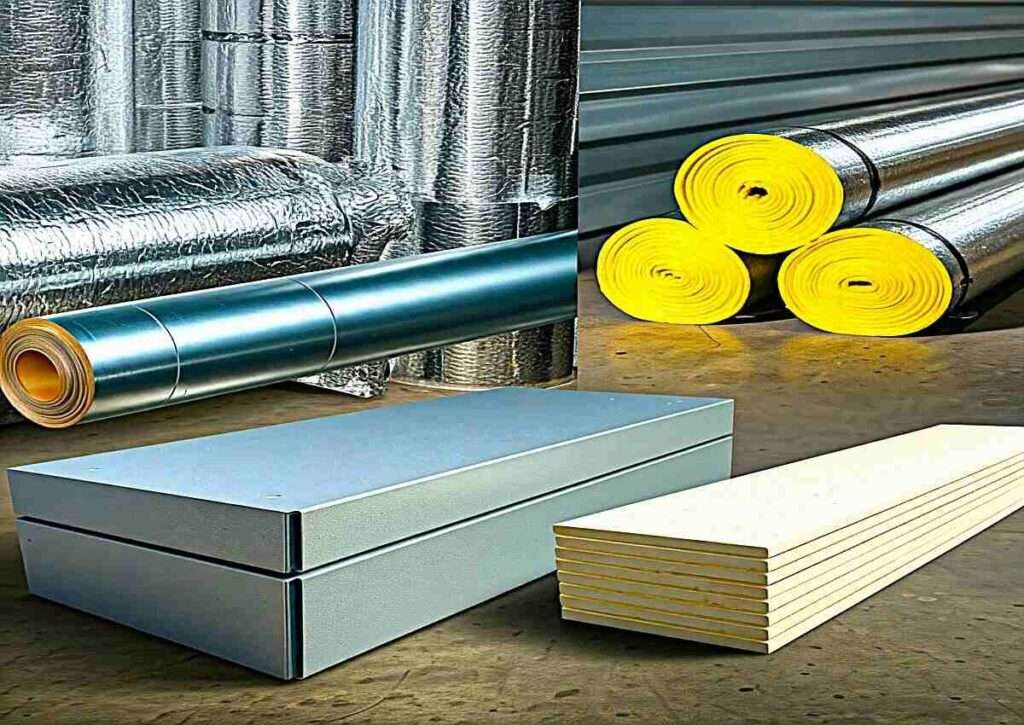
Types of Steel Building Insulation
When choosing insulation for a steel buildings, you have four primary options, each with unique benefits and costs. It’s essential to select insulation that aligns with your building’s size, shape, location, and purpose.
Here’s a breakdown of the types available:
Reflective Foil Insulation
Also known as foil bubble insulation, reflective foil is waterproof and has a shiny surface that reflects heat, making it ideal for warmer climates. It not only provides thermal insulation but also adds brightness to the building’s exterior. While it can be more expensive than other options, reflective foil is straightforward to install. You only need basic tools like staples, glue, or nails, and no specialized protective gear is required during installation.
Each of these insulation types offers distinct advantages based on your building’s specific requirements. Choosing the right insulation can improve comfort, reduce energy costs, and protect the structure from moisture and temperature extremes.
Fiberglass Insulation
Fiberglass is one of the most popular and cost-effective insulation options for steel buildings. It typically comes in blankets or rolls, often referred to as blanket insulation. Fiberglass is relatively easy to install, making it a great option for DIY projects. However, wearing protective clothing and a mask during installation is essential, as fiberglass fibers can irritate the skin and respiratory system.
While fiberglass is affordable and effective, it can attract pests such as rodents and birds. For this reason, it is commonly sold with a protective facing, which not only helps deter pests but also enhances the appearance of the building’s interior.
Insulated Panels
Insulated panels consist of two metal sheets with an insulating core sandwiched between them. Although this option tends to be more expensive, it eliminates the need for additional insulation methods like rigid boards or fiberglass blankets.
These panels offer exceptional thermal insulation, easy installation, and a sleek, modern look. They are particularly well-suited for prefabricated steel buildings where both performance and appearance are essential considerations. Using insulated panels can streamline the insulation process and enhance the overall aesthetics of the structure.
Rigid Board Insulation
Rigid board insulation is a versatile and widely-used option for insulating steel buildings, suitable for a variety of climates. It not only provides effective thermal insulation but also helps to reduce external noise, making it a popular choice for commercial and industrial applications.
If you plan to use rigid boards, it’s essential to inform your metal building manufacturer in advance, as this type of insulation requires longer panel lengths and extended fasteners to accommodate the added thickness. Rigid boards are easy to install and offer a durable solution that enhances the building’s energy efficiency and soundproofing.
Addressing Cost-Effectiveness and ROI of Steel Building Insulation
When selecting insulation for a Commercial Steel Building, cost is a critical factor, but understanding the potential return on investment (ROI) can also help guide your decision. The right insulation not only saves on initial heating and cooling costs but also has long-term benefits, making it a cost-effective solution over time. Here’s a breakdown of the cost-effectiveness and ROI for the main types of insulation commonly used in steel buildings:
Reflective Foil Insulation
Reflective foil insulation can be more expensive upfront, especially if used as a primary insulation type. However, its ability to reflect radiant heat makes it ideal for hot climates, where it can significantly reduce cooling costs. With energy savings ranging from 5% to 10% in warmer regions, reflective foil insulation can start paying for itself within a few years. Additionally, its easy DIY installation means you save on labor costs, enhancing its ROI.
Fiberglass Insulation
Fiberglass is one of the most affordable insulation options, with lower upfront costs than other types. While it may not have the highest R-value, it still provides effective thermal and sound insulation. In regions with moderate climates, fiberglass can reduce energy bills by 10% to 15%, with ROI achieved within a few years. The potential savings in energy costs quickly offset the initial investment, making fiberglass a cost-effective choice for budget-conscious building owners.
Insulated Panels
Insulated panels come with a higher upfront cost but offer exceptional thermal performance and durability. These panels can reduce heating and cooling costs by 15% to 20%, making them particularly beneficial in areas with extreme temperature fluctuations. With their durability and energy-saving potential, insulated panels typically offer an ROI within 5 to 10 years, depending on energy costs and climate. Additionally, their sleek, modern appearance can increase the overall value of the building.
Rigid Board Insulation
Rigid board insulation is versatile and provides effective insulation across different climates. Although it may require additional adjustments during installation, such as longer fasteners and extended panels, it is highly efficient at reducing both heating and cooling costs. ROI for rigid boards can vary, but they often pay for themselves within 3 to 7 years, especially in climates with significant seasonal temperature changes. The enhanced durability and soundproofing provided by rigid boards can also add value to the building, further increasing long-term ROI.
Maximizing ROI Through Proper Insulation Choice
Ultimately, the key to maximizing ROI lies in choosing the right insulation for your building’s specific needs and climate. While upfront costs may vary, the long-term savings on energy bills and maintenance costs often outweigh the initial investment. Additionally, well-insulated steel building can see enhanced property values and reduced wear and tear on HVAC systems, providing financial benefits over time. Selecting the appropriate insulation type can lead to significant cost savings and a quicker return on investment, ensuring both immediate and long-term economic advantages for building owners.
Start Your Steel Building Project with Prestige Steel Structures
Partnering with a steel building company like Prestige Steel Structures ensures that your steel building project is expertly handled from start to finish. They guide you through every step, including selecting the right insulation to meet your building’s unique needs.
Insulating your steel buildings provides multiple benefits beyond temperature control. It helps muffle noise from both interior equipment and exterior sources like rain, hail, or traffic, creating a quieter environment. Moreover, insulation reduces energy consumption, leading to lower heating and cooling costs, which enhances the building’s energy efficiency.
Investing in insulation with Prestige Steel Structures not only increases the return on investment ( ROI )for your steel buildings but also keeps it in excellent condition for a longer period. Proper insulation contributes to a cleaner, healthier facility, protecting both the structure itself and the well-being of those who use it.
Conclusion
Choosing the right insulation for your steel buildings is essential for maximizing energy efficiency, comfort, and long-term savings. With options like reflective foil, fiberglass, insulated panels, and rigid board insulation, each type offers unique benefits to suit different climates, budgets, and building requirements. Proper insulation helps protect against temperature extremes, reduce noise, and prevent moisture damage—contributing to the overall durability and value of your structure. By partnering with experts like Prestige Steel Structures, you can ensure that your building is well-insulated, saving on energy costs and enhancing the facility’s longevity. Begin your steel building project today and experience the lasting benefits of effective insulation.
FAQs
What is the best type of insulation for steel buildings?
The best insulation depends on your climate, budget, and building use. Reflective foil suits hot climates; fiberglass is affordable.
How does insulation help steel buildings?
Insulation regulates temperature, reduces noise, prevents moisture, and lowers energy costs by minimizing heat transfer.
Can I install insulation in a steel building myself?
Yes, fiberglass and reflective foil are DIY-friendly. Insulated panels may require professional installation for best results.
What’s the ROI on insulating a steel building?
ROI varies by type, with most options paying for themselves in 3-10 years through energy savings.
Does insulation prevent condensation in steel buildings?
Yes, insulation reduces condensation by limiting thermal bridging, protecting against rust and moisture buildup.

